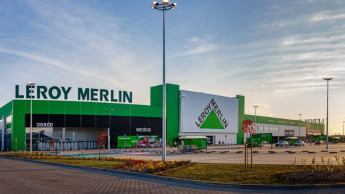
deep insights, facts & figures
14.11.2007
GfK study reveals purchasing power in 40 European countries
People in several regions of central and eastern Europe are wealthier than their western European neighbours. The residents of the Baltic capital cities also have more disposable income than those of Italy’s weakest community. However, the new EU member states still lag behind in a country comparison. These are some of the findings of the study, "GfK Purchasing Power Europe 2007/2008". According to the GfK survey, European consumers have a total of around € 8 000 bn to spend from their net household income in 2007. This corresponds to an average purchasing power, or disposable income, of around € 11 998 per capita across the 40 countries surveyed. This figure includes state payments such as unemployment benefit, child support allowance and pensions. Three countries still represent Europe’s oases of affluence: Switzerland and Liechtenstein with an average purchasing power of € 27 521, and Luxembourg with € 27 395. Germany ranks in 10th place with € 18 055 in disposable annual income, behind Austria and France. Moldova has the lowest purchasing power, with a per capita average of € 685 per annum, corresponding to just one-fortieth of the purchasing power of Swiss citizens. Booming Emerald Isle Ireland is currently recording the strongest growth in western Europe. Purchasing power has risen by around 30 per cent since 2003. Over the same period of time, German purchasing power has risen by around 9 per cent, a figure achieved in Ireland over the past year alone. The Emerald Isle has gone from sixth place in the purchasing power rankings last year to fourth place this year, recording per capita income of € 22 207. The 506 211 residents of Dublin County Borough have an average household income of € 23 680 per annum. By way of comparison, the citizens of Hamburg have almost a quarter less purchasing power at €19 225, and the average "Berliner" has over 40 per cent less each year at just € 16 508. Central and eastern Europe are catching up Latvia’s purchasing power has improved, moving up four places in the rankings, so that the country is now in 25th place. Similarly, its Baltic neighbours Estonia and Lithuania have all climbed up the rankings, as has Serbia-Montenegro. Nothing has changed at the bottom of the purchasing power table, but per capita purchasing power is also developing positively in the low-income countries. For example, purchasing power in Ukraine has increased by approximately 26 per cent since last year, more than in any other country. This means that Ukrainians have around € 300 more disposable income in 2007 than in 2006. Slovenia, the most affluent of the countries to join the EU in 2004, shows a level of purchasing power which is only about € 1 000 below that of Portugal, whose average yearly per capita income is € 9 674. Reversal of the East-West gap Residents of all 23 districts of Hungary’s capital city, Budapest, have more money per capita than the population of the municipality of Freienbessingen in the German state of Thuringia, for example. The residents of the capital of Lithuania are also € 500 better off this year than the residents of Freienbessingen. In Hungary, residents of the town of Heviz, which is the most prosperous municipality on Lake Balaton, have a per capita purchasing power of € 7 762, which is over 40 per cent above the national average and considerably higher than that of poorer municipalities in France, such as the third arrondissement of Marseilles. Furthermore, purchasing power in the capital cities of the Baltic states is above the national average – by almost 30 per cent in Vilnius, Lithuania, and by around 25 per cent in Riga, Latvia. Residents here have more money than those of Agerola, the Italian municipality with the weakest purchasing power, which is almost two-thirds below the national average. Stark contrasts between neighbours There is often a significant gap in purchasing power between various regions of the countries of central and eastern Europe. For example, the population of Bratislava, Slovakia’s richest municipality, has almost twice as much money as the inhabitants of Bucharest, the wealthiest municipality in Romania. Similar contrasts may even be observed within a single country. In Britain for example, residents of the most affluent part of the capital, the City of London, average € 10 000 more than those in the second most affluent, the borough of Kensington and Chelsea: The 9 200 residents of the City of London have a per capita purchasing power of € 48 456 compared with "merely" € 38 426 per annum for the 196 000 residents of Kensington and Chelsea.
Related articles
Read also

 Menü
Menü















